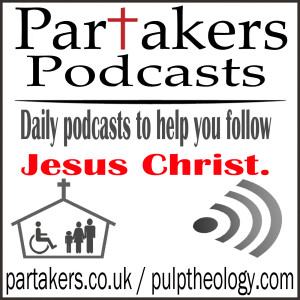
G’day and welcome to Partakers and to our series, HAHA – Heroes and Heretics Abound. Together we are looking at the story of the church from its origins to the Age of Reasoning in the 18th century.
Today we will look very briefly at debates, decretals, a donation and doctrinal disputes! All of which help to make up what makes Church History so fascinating!
Debates!
Use of images and pictures - During the 8th century, there was intense debate over the use of images and pictures to aid in worship. Pope Gregory 1 had allowed them to stimulate worship, but was very clear in that they were not to be objects of worship or adoration. However, they quickly became objects of worship and adoration, with the Eastern Church eventually allowed salutation and honorific worship of images, which in turn led to the strong use of images. This practise is still alive in the Orthodox churches today. The Roman Church however, have resisted their use.
In about the year 850, documents, which we know to be decretals or papal orders, purporting to go back to the 1st century, were discovered. These documents, or Decretals, contained decisions and laws of the Roman bishop, the Pope, and designed to elevate the power of the Papacy. This was an attempt to prove the original power of the Pope and the bishops against the metropolitan and secular authorities.
These documents mainly consisted of material plagiarised from older writings, including genuine documents, and pieced together. The excerpts were freely altered, and at times concluded differently to the originals. Chiefly, these False Decretals safeguarded the privileges and choices of the bishops, because the bishops were the pillars of the Christian church. Therefore they deserved protection from the laity and other bishops. They were later found to be forgeries in the 15th century, but by that time they had already been well used by the Papacy. These were discovered to be a forgery in the 15th century by an Italian Catholic priest Lorenzo Valla.
Donation of Constantine
Part of these False Decretals was the Donation of Constantine, quite possibly the most famous of the Decretals. This forged document claimed that Constantine presented the Pope with the insignia of the Western Empire, giving him authority over all the Empire. However, there had been some doubt over their authenticity since the 11th century.
Here is an excerpt:
Emperor Constantine yielded his crown, and all his royal prerogatives in the city of Rome, and in Italy, and in western parts to the Apostolic See. … The Emperor Constantine the fourth day after his baptism conferred this privilege on the Pontiff of the Roman church, that in the whole Roman world priests should regard him as their head, as judges do the king.
We-together with all our satraps, and the whole senate and my nobles, and also all the people subject to the government of glorious Rome-considered it advisable, that as the Blessed Peter is seen to have been constituted vicar of the Son of God on the earth, so the Pontiffs who are the representatives of that same chief of the apostles, should obtain from us and our empire the power of a supremacy greater than the clemency of our earthly imperial serenity is seen to have conceded to it, choosing that same chief of the apostles and his vicars to be our constant intercessors with God.
And to the extent of our earthly imperial power, we have decreed that his holy Roman church shall be honoured with veneration, and that more than our empire and earthly throne the most sacred seat of the Blessed Peter shall be gloriously exalted, we giving to it power, and dignity of glory, and vigour, and honour imperial. The Pontiff, who at the time shall be at the head of the holy Roman church itself, shall be more exalted than, and chief over, all the priests of the whole world, and according to his judgment everything which is provided for the service of God and for the stability of the faith of Christians is to be administered.
Eastern & Western Church Moves Apart - During this period there was also upheaval within the churches. The Eastern and Western churches moved even further apart during this period. What were some of the differences between the Eastern and Western churches?
Language – Eastern church spoke Greek, and the West church therefore spoke Latin.
Theology - There was debate over the role of the Holy Spirit. The Eastern Church believed that the Holy Spirit was sent from the Father through the Son. The Western Church believed that the Holy Spirit was sent from the Father and the Son.
Transubstantiation - Paschasius Radbertus wrote a treatise in 831 'on the Body and Blood of the Lord' defining the real presence of Christ in the Eucharist. This was accepted as official doctrine at the Lutheran Council in 1215.
Confession - popularised during the 8th century, and first commanded by the bishop in 763.
Priesthood - the priesthood was considerably elevated by now with the priests becoming a class of mediators between 'man and God'.
Next time we will look at the Papacy at its very height! Thanks for listening! Come back to Partakers, where every day there is something new to encourage your walk as a Christian in the 21st century.
More Episodes
 2024-09-19
2024-09-19
 2024-09-18
2024-09-18
 2024-09-11
2024-09-11
Create your
podcast in
minutes
- Full-featured podcast site
- Unlimited storage and bandwidth
- Comprehensive podcast stats
- Distribute to Apple Podcasts, Spotify, and more
- Make money with your podcast
It is Free
- Privacy Policy
- Cookie Policy
- Terms of Use
- Consent Preferences
- Copyright © 2015-2024 Podbean.com






